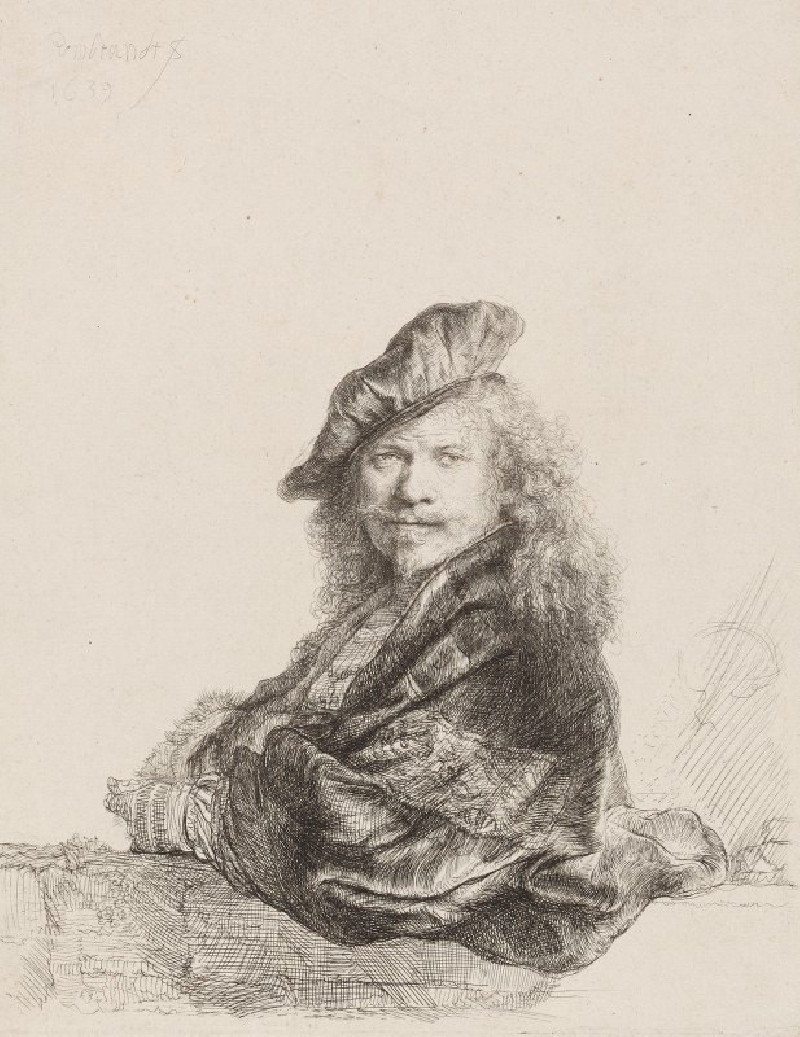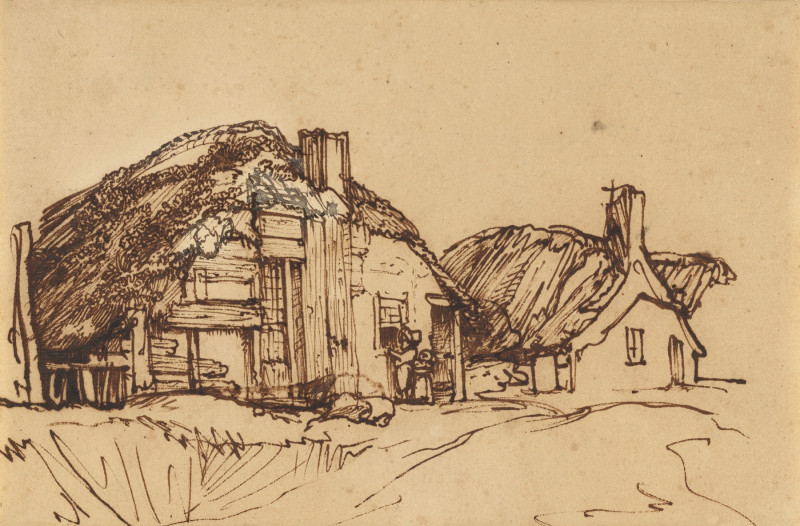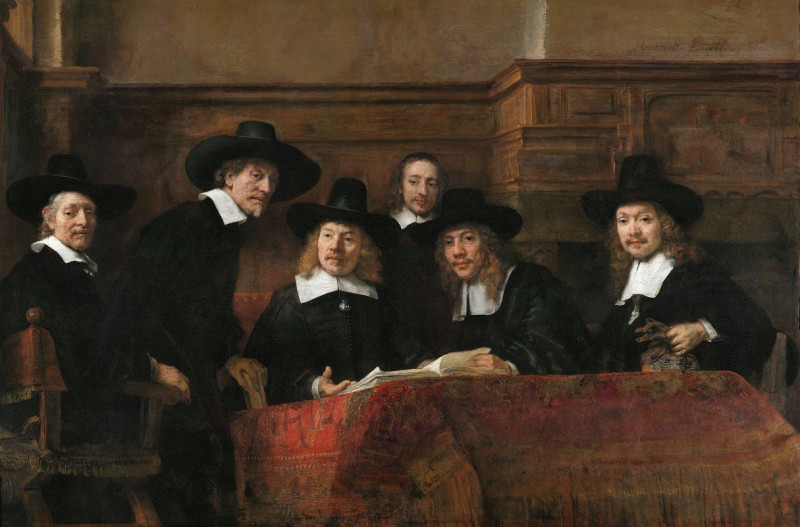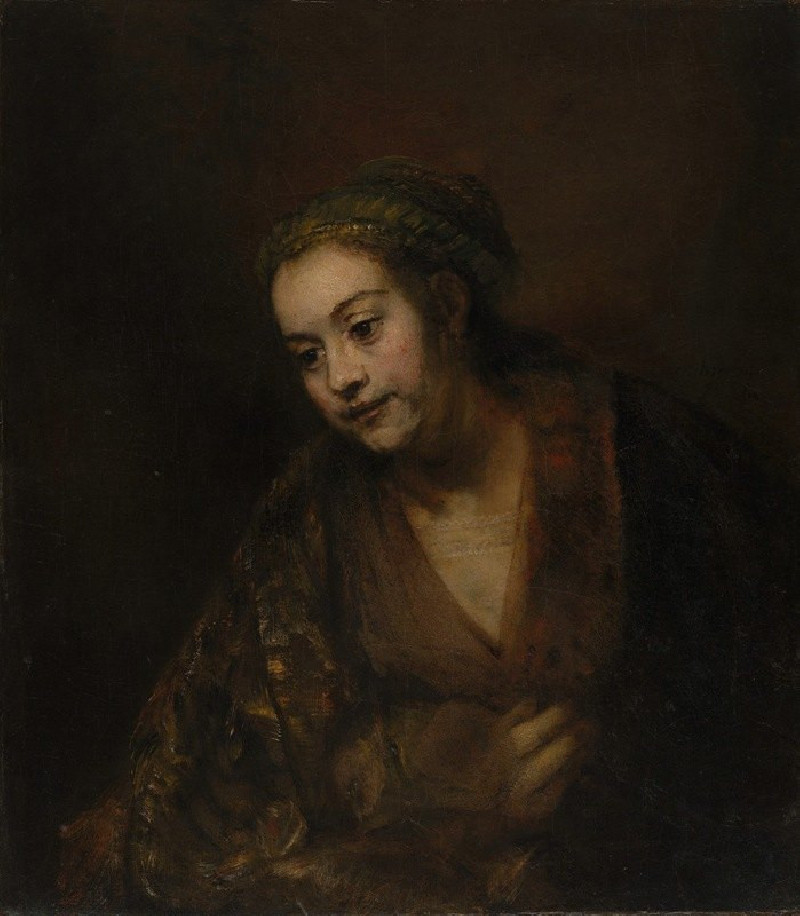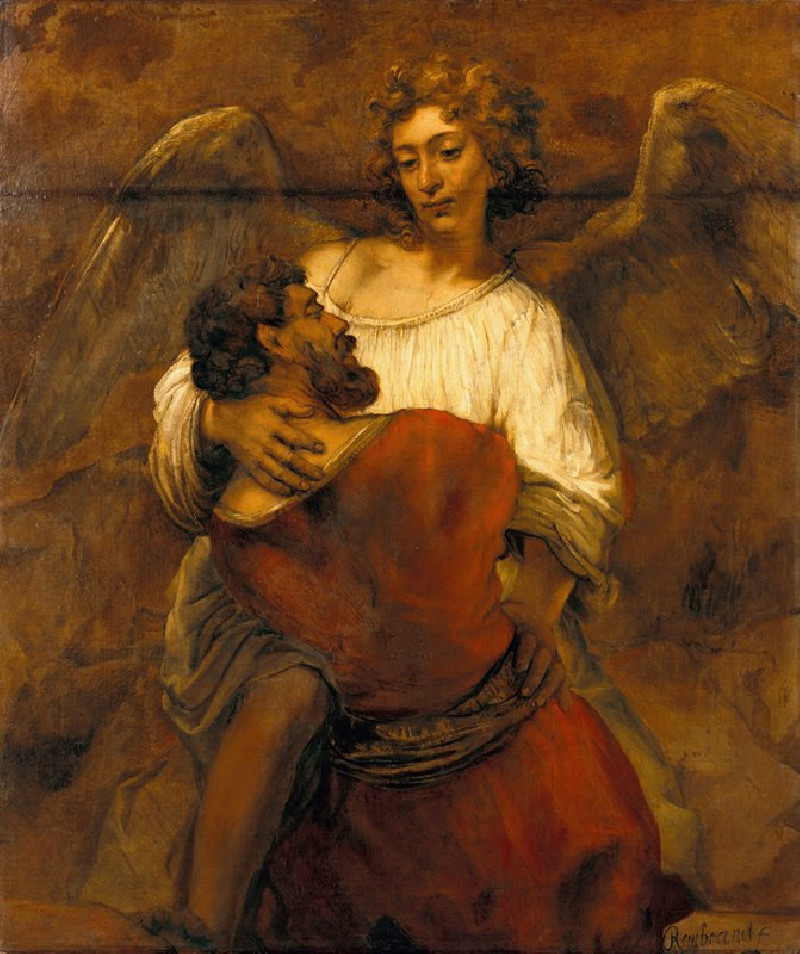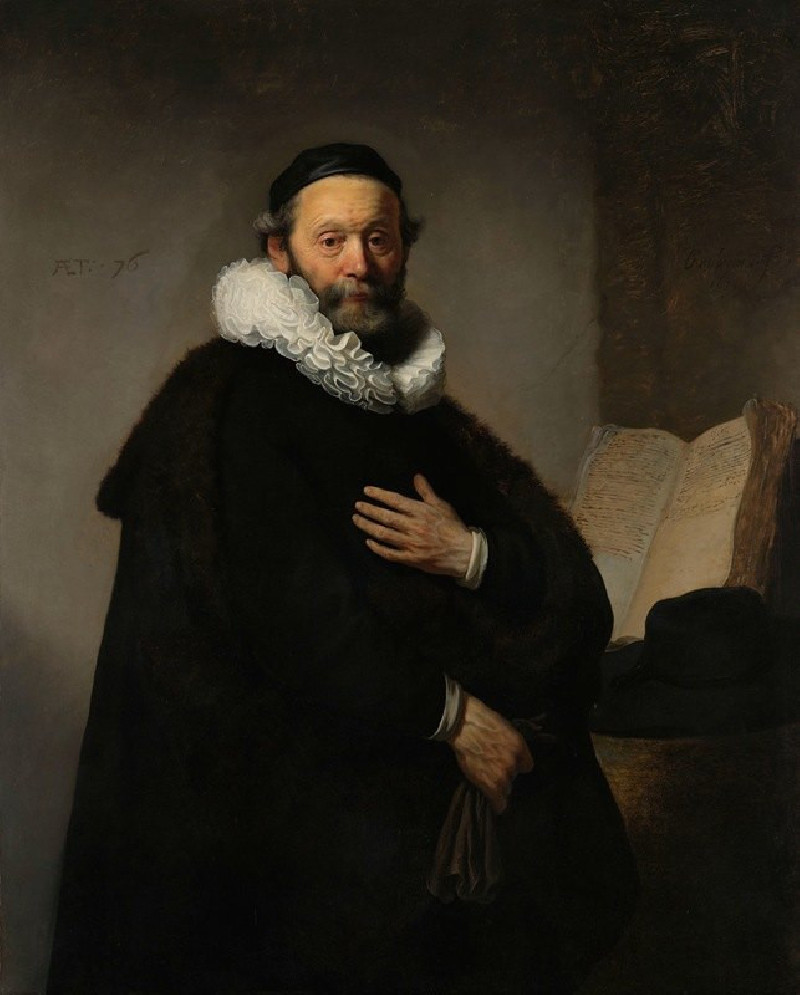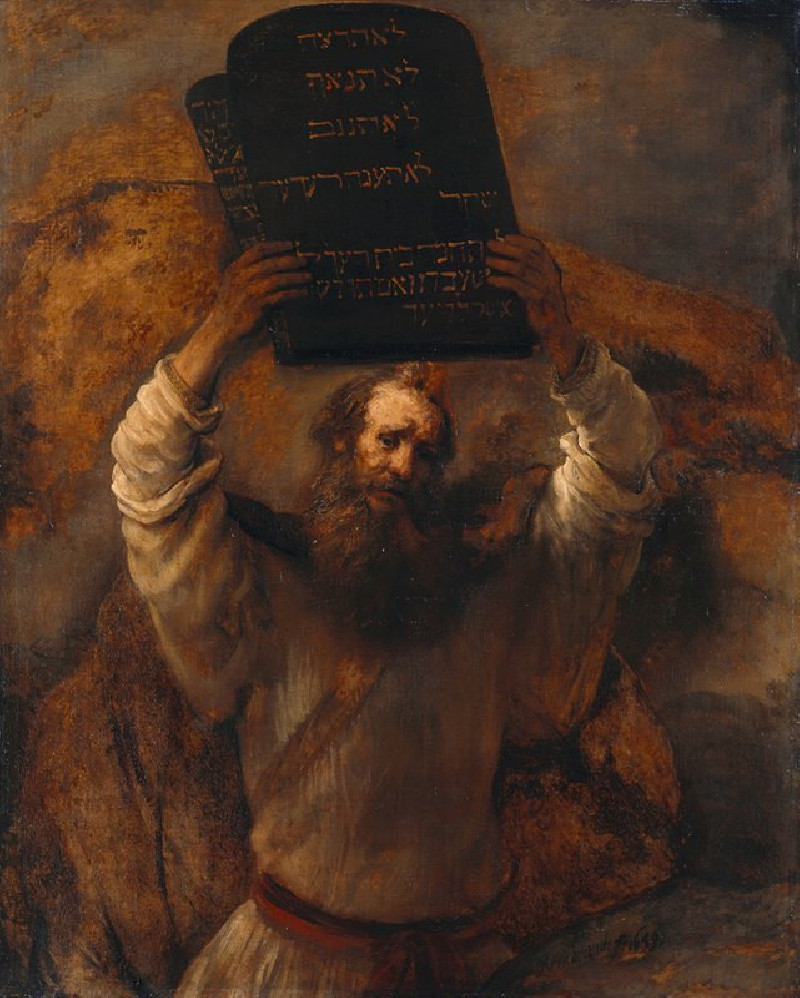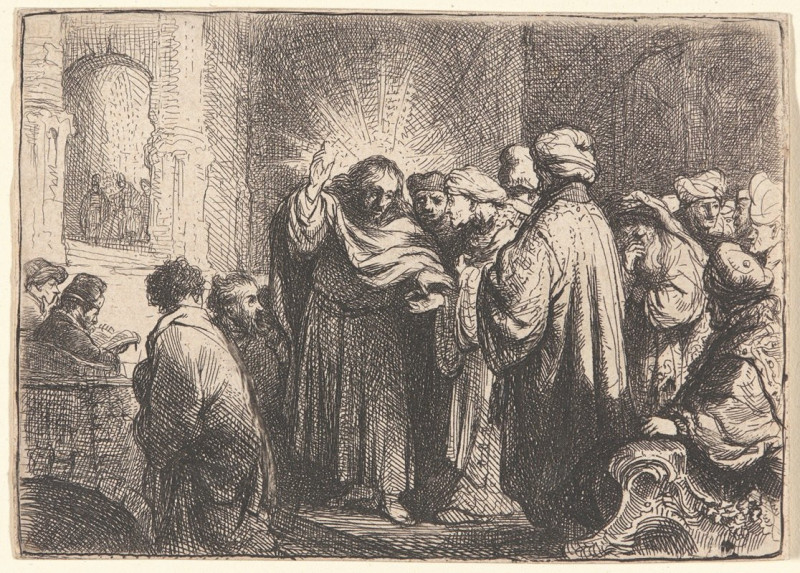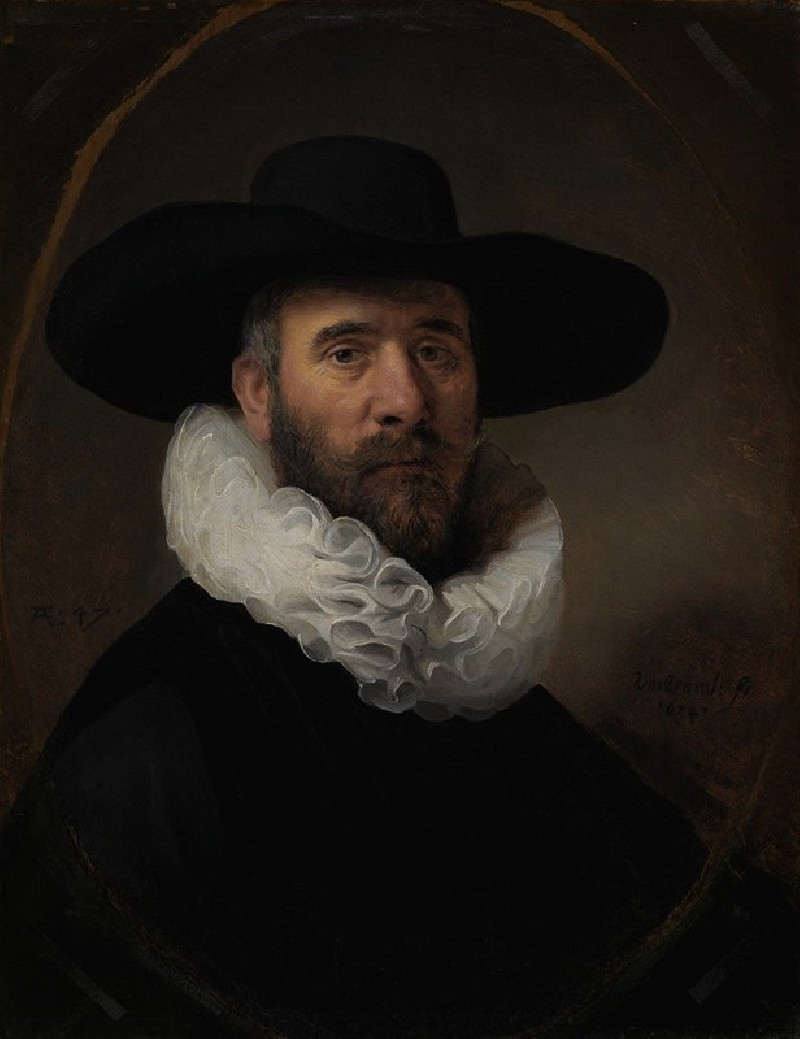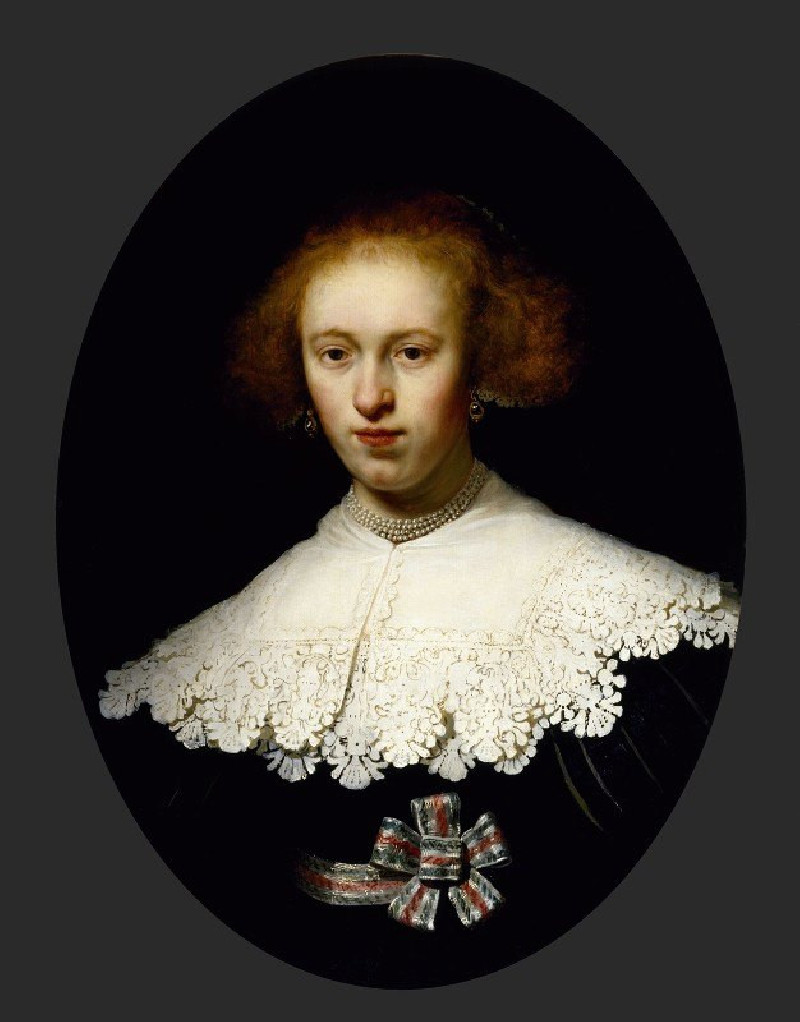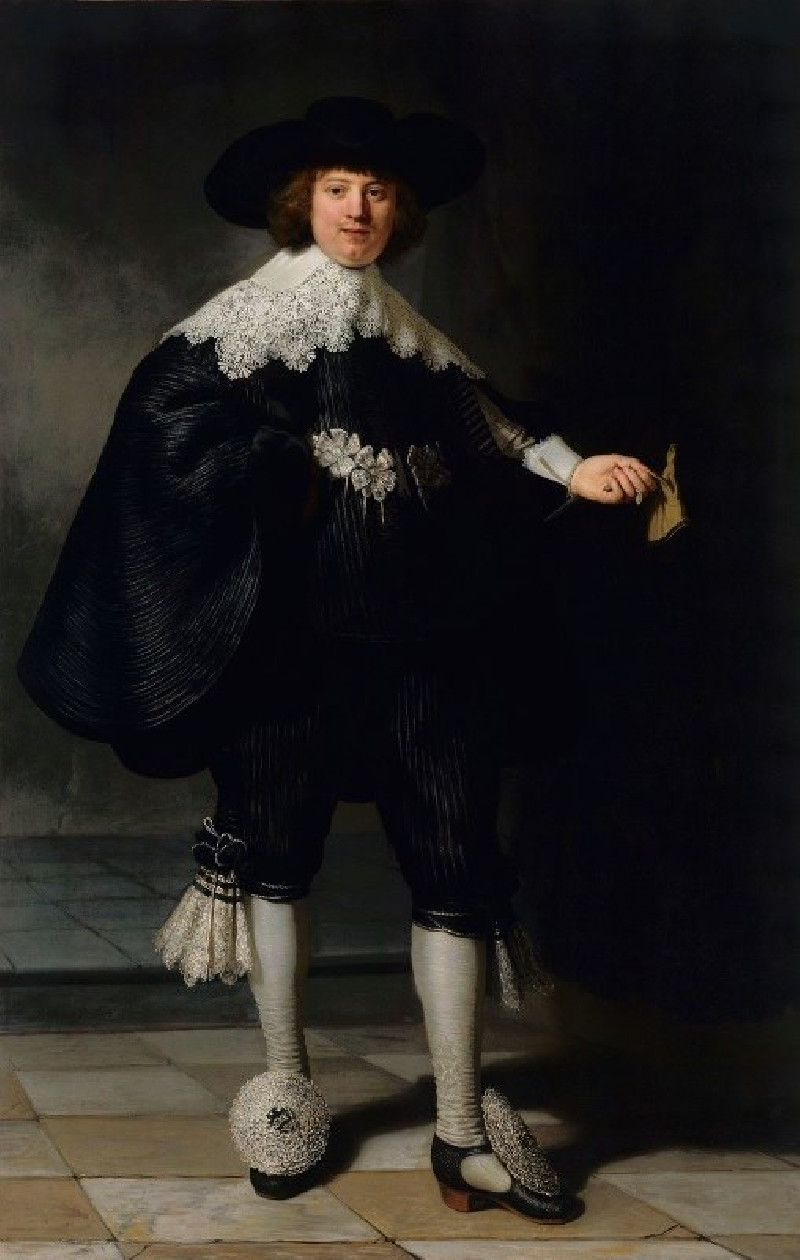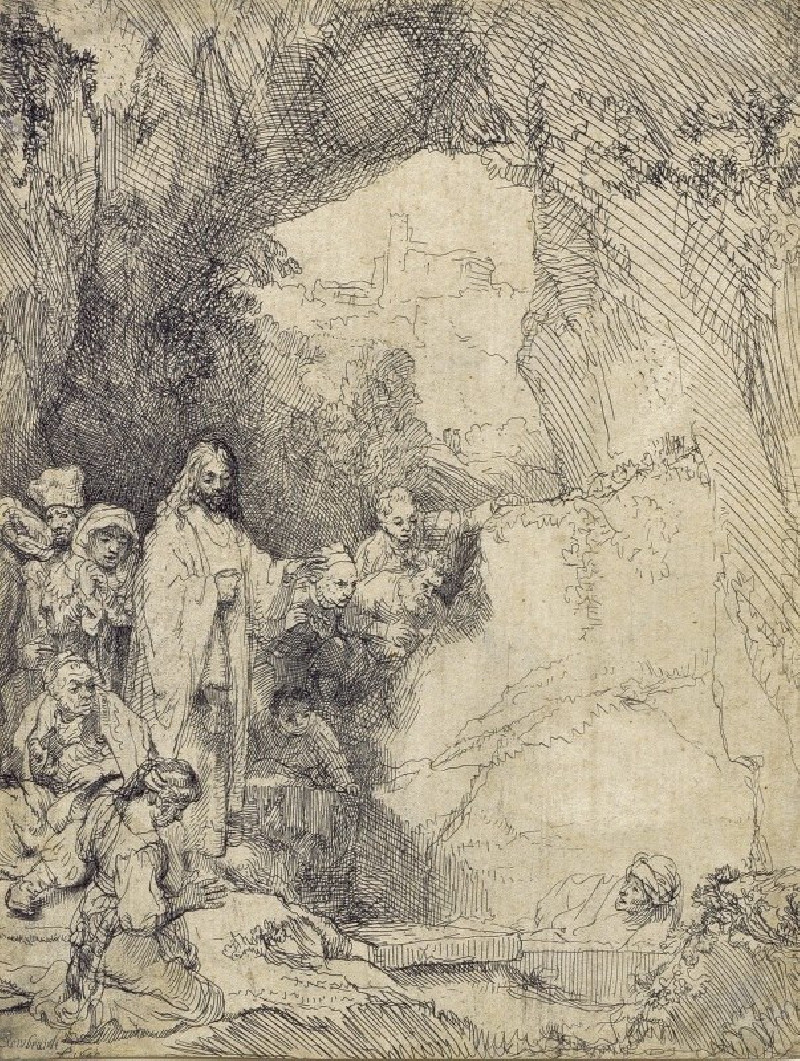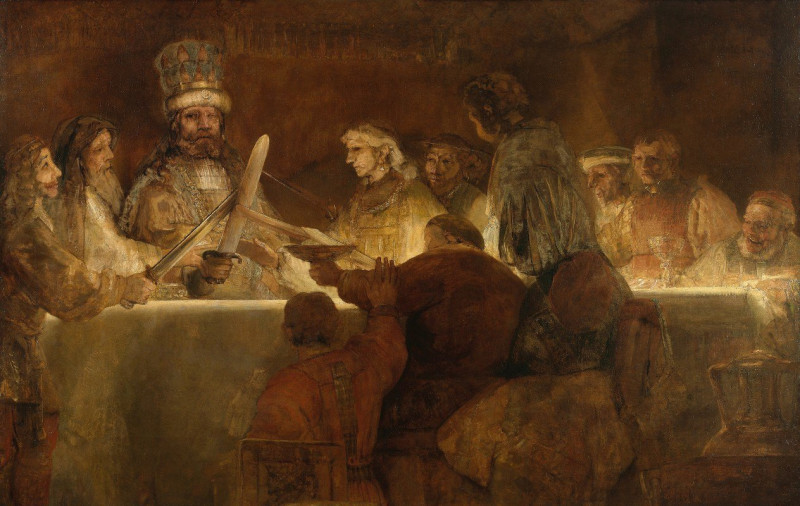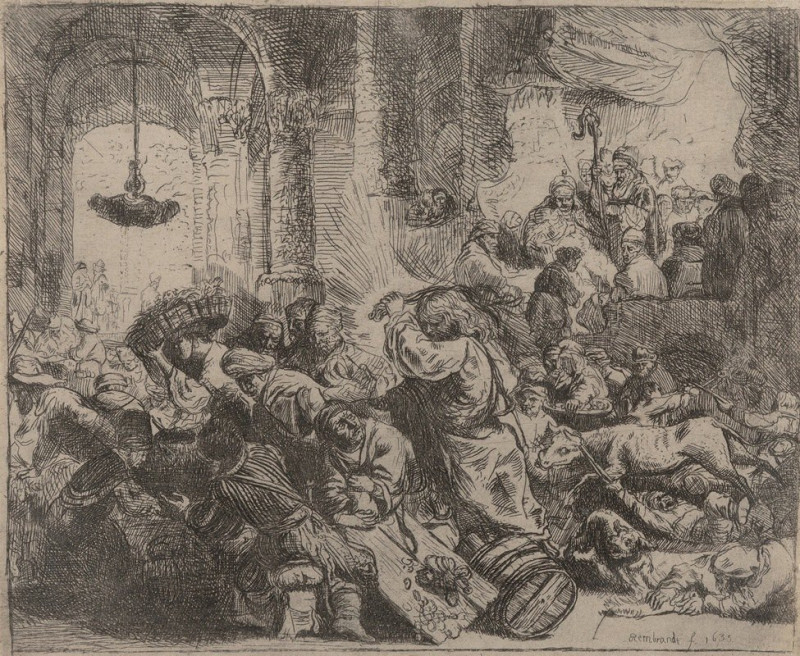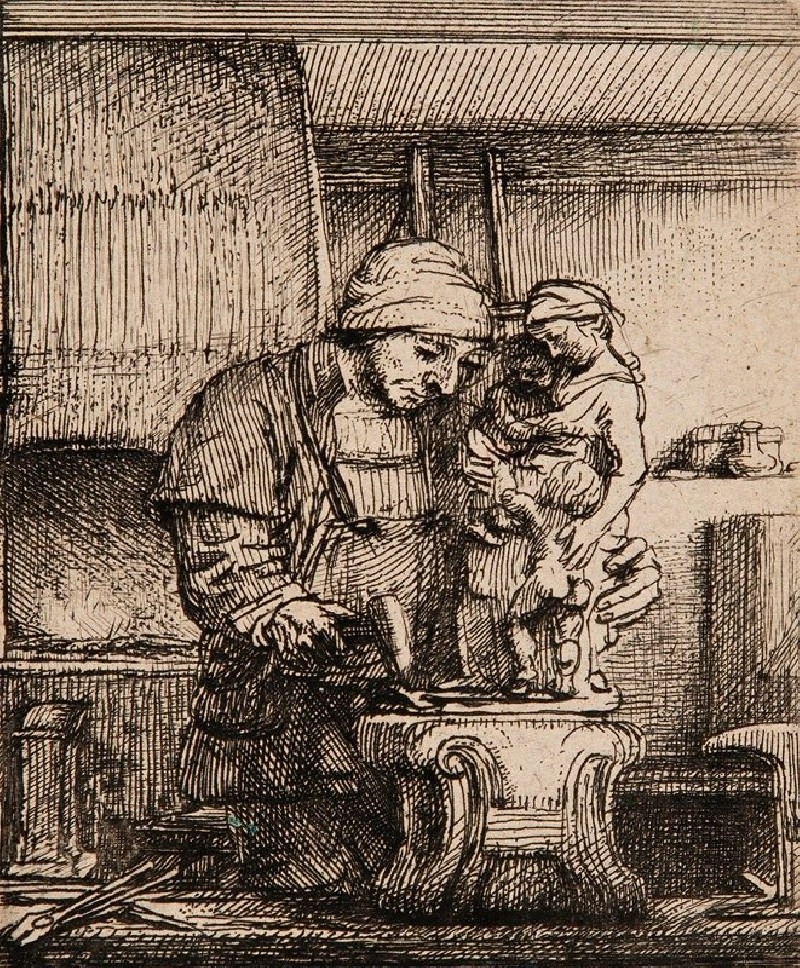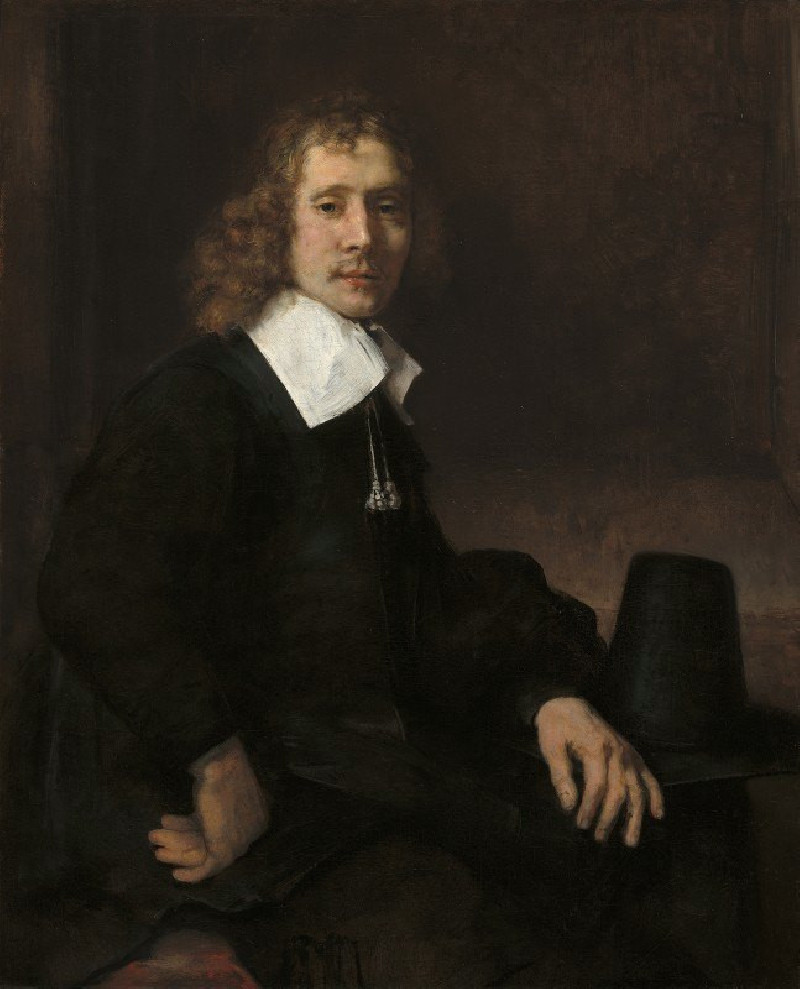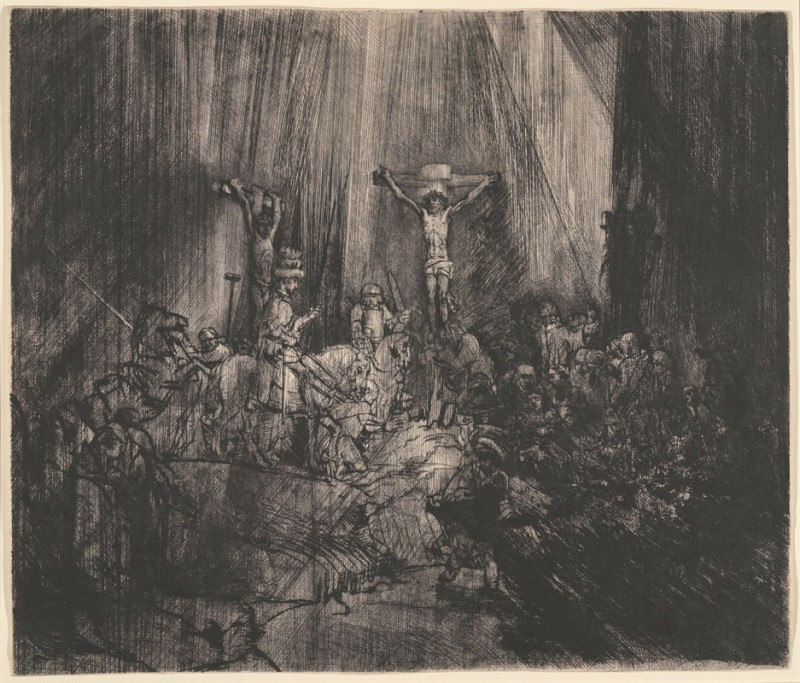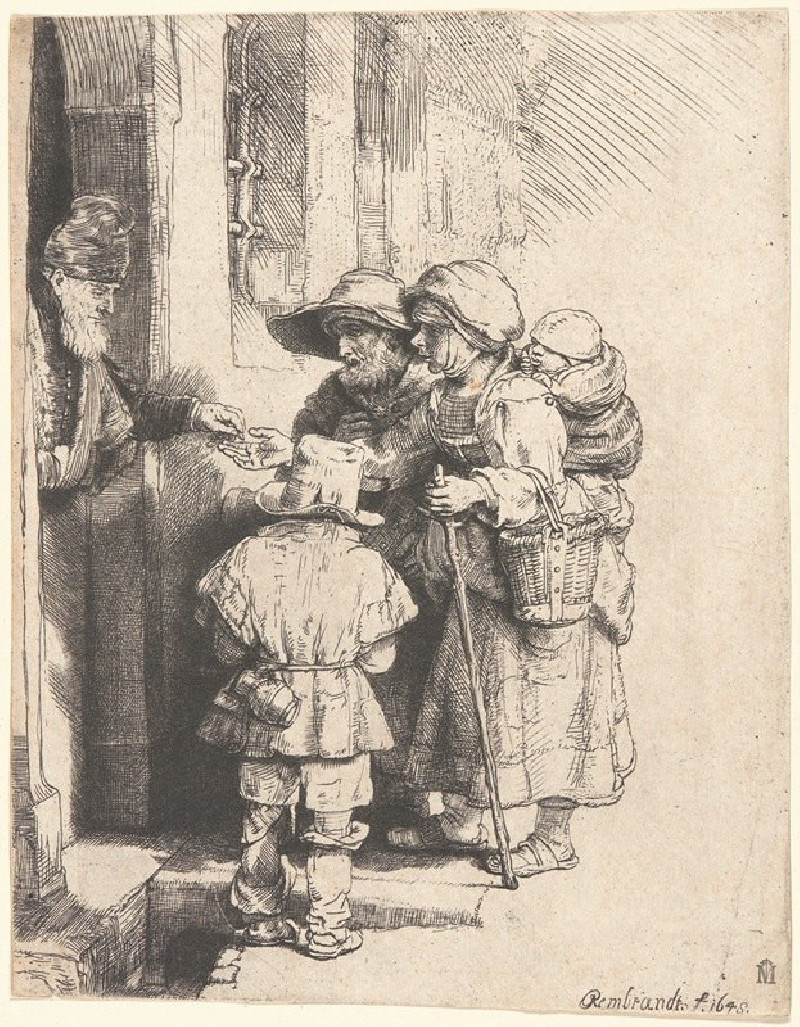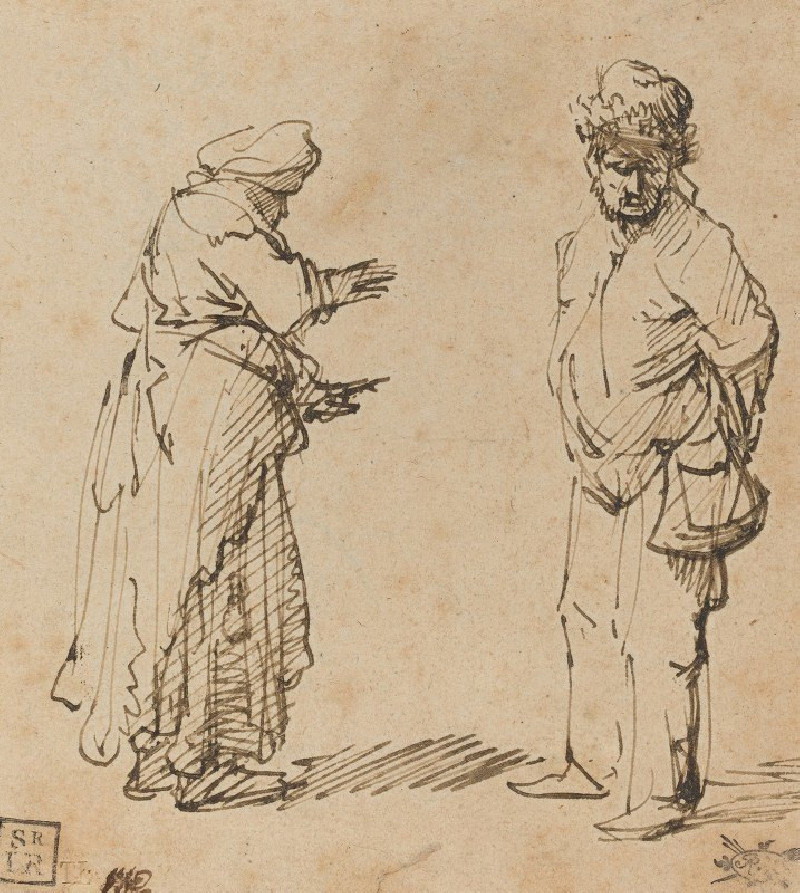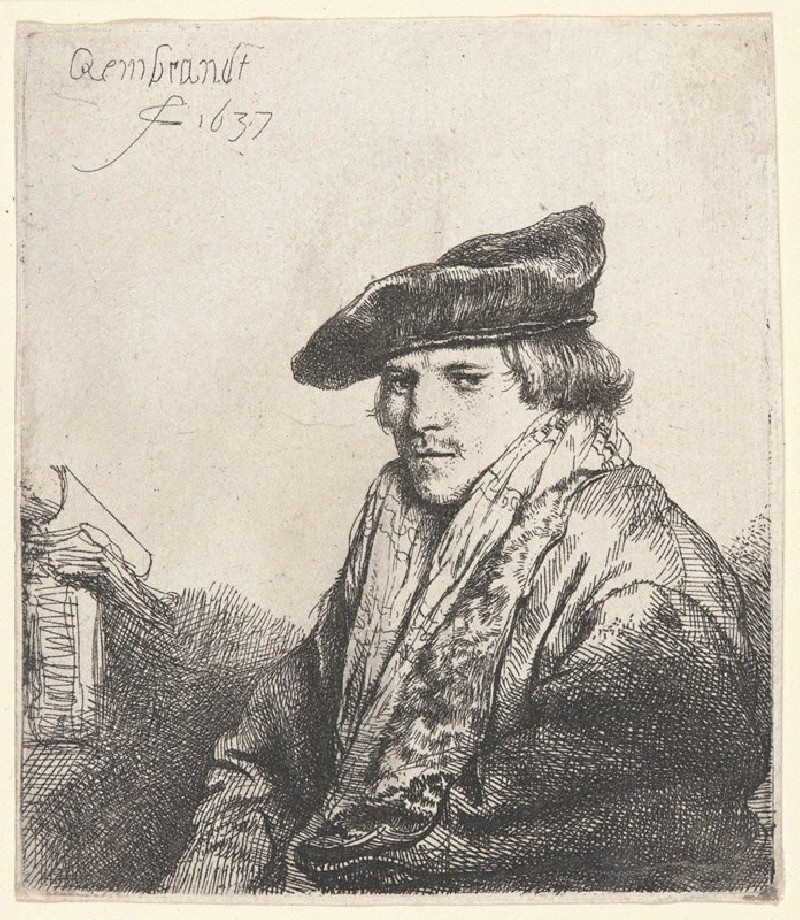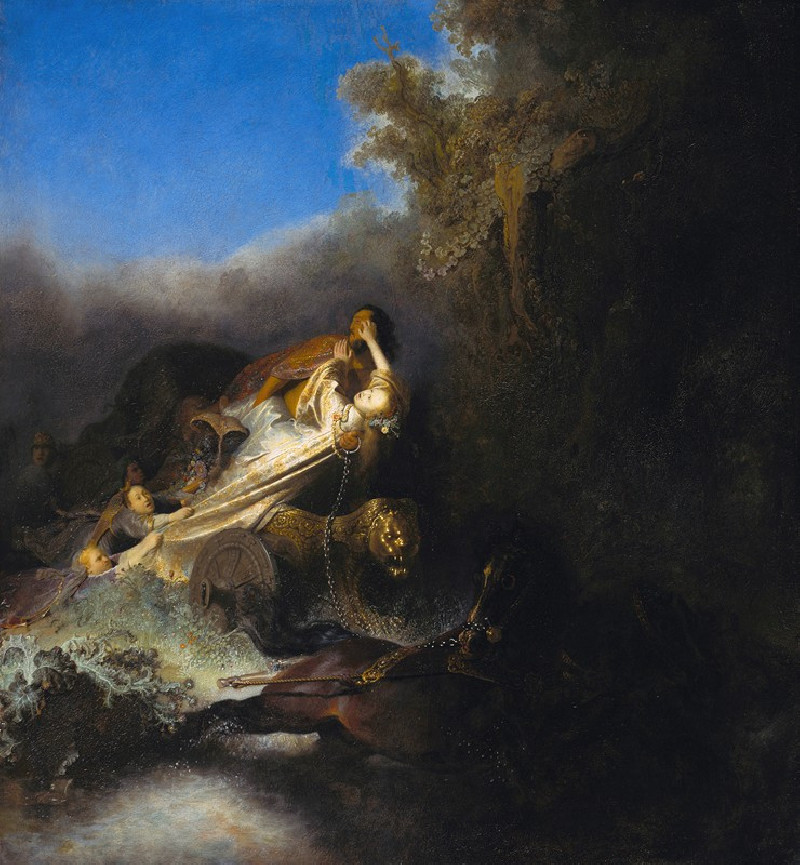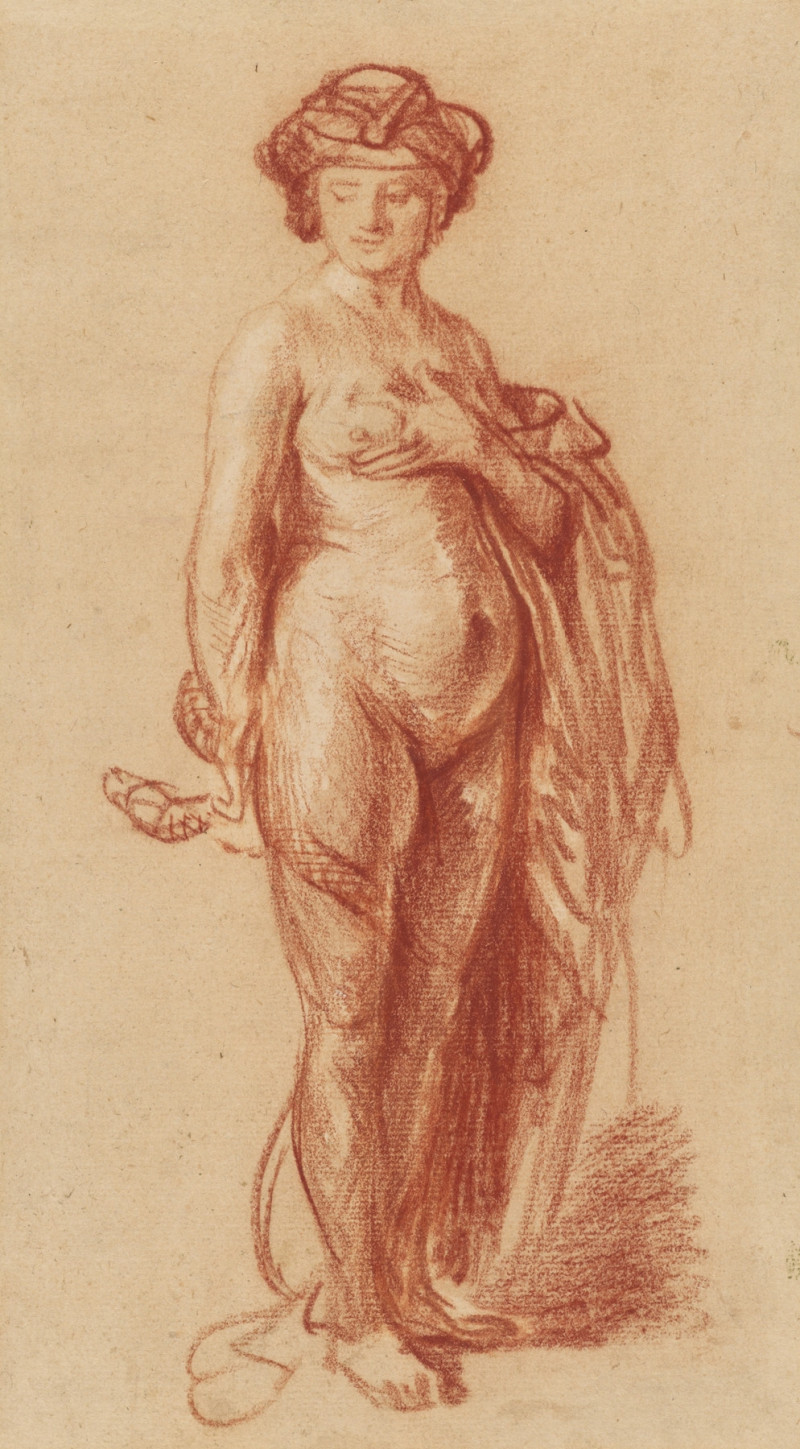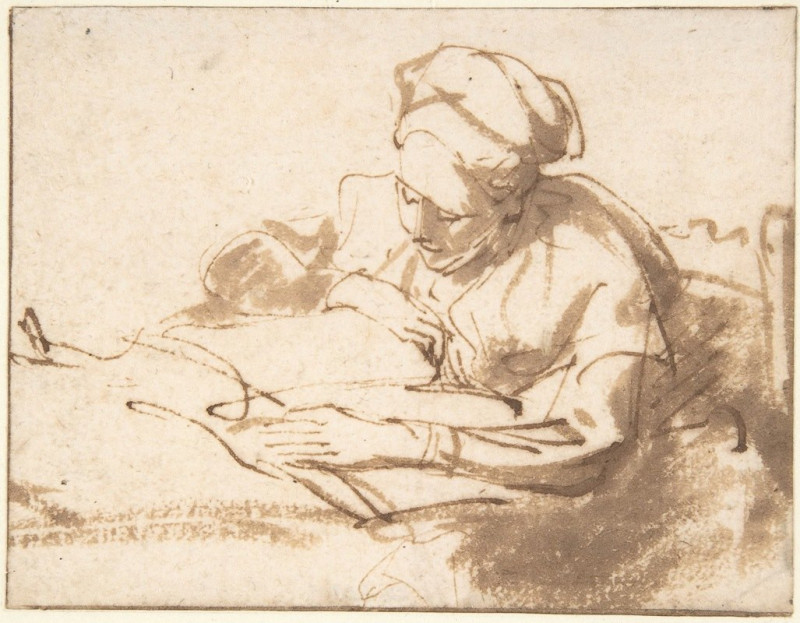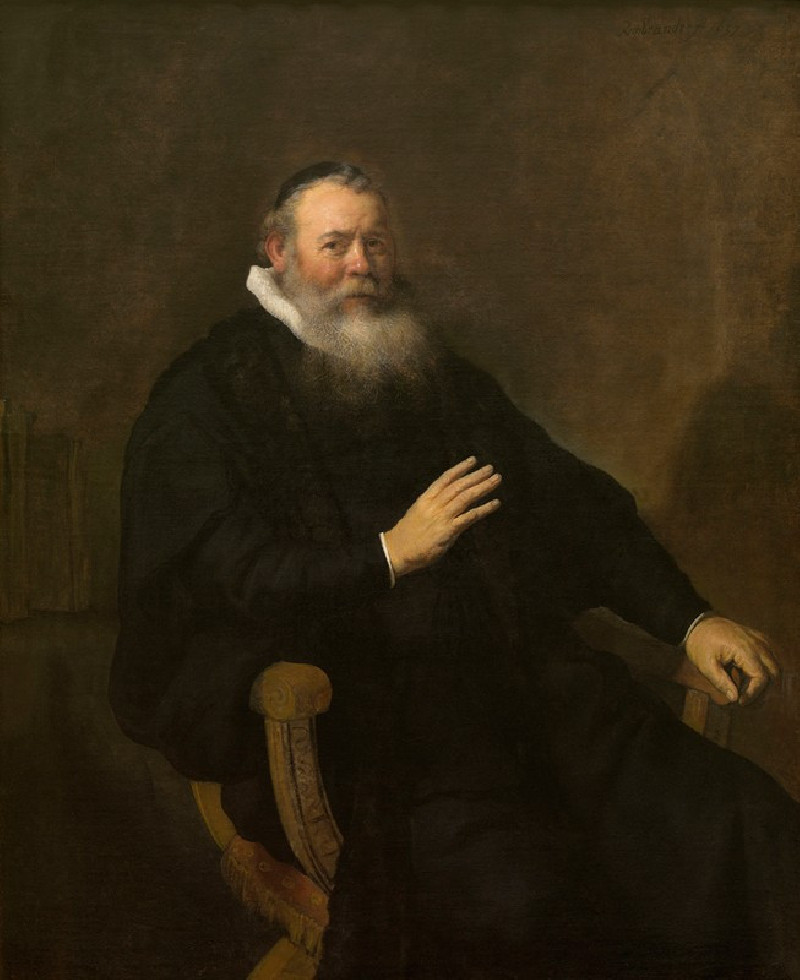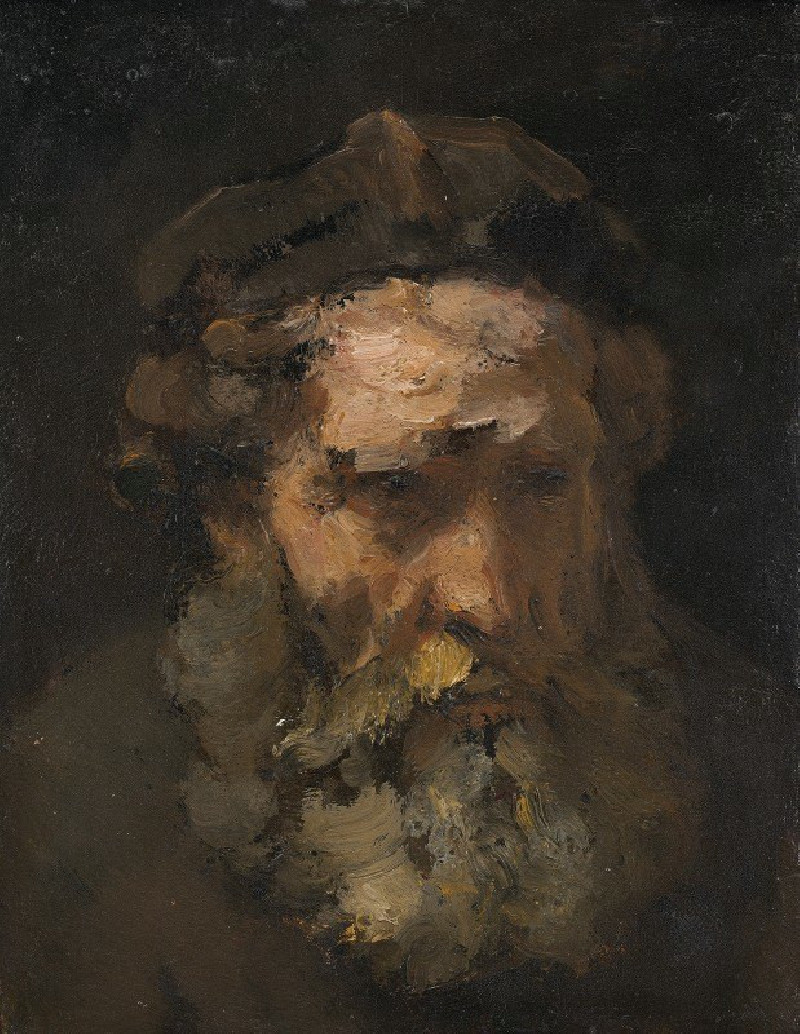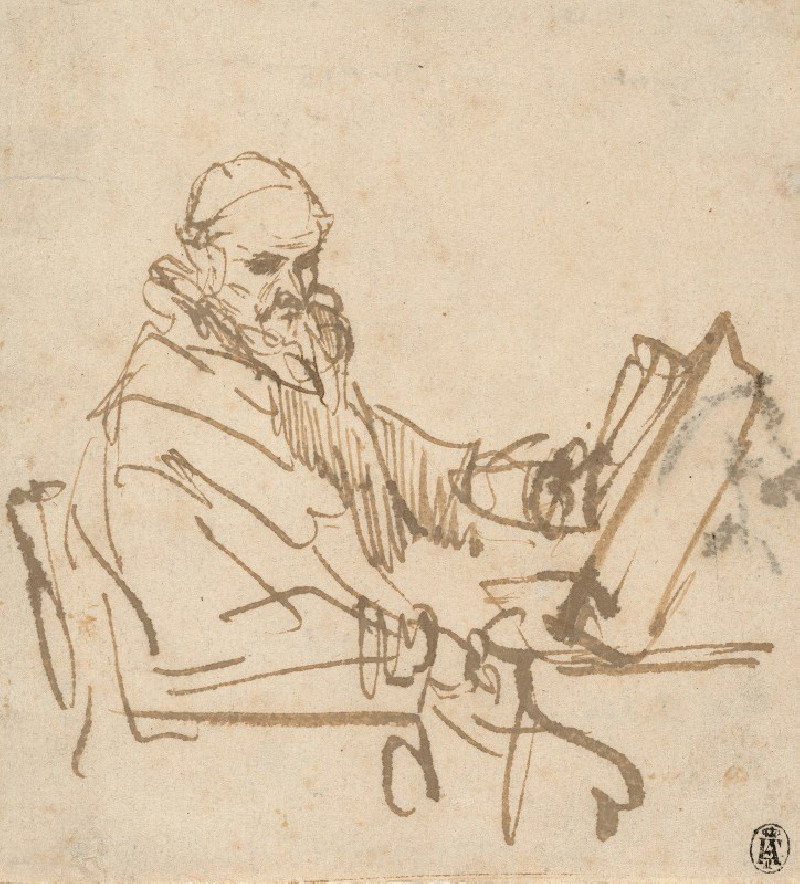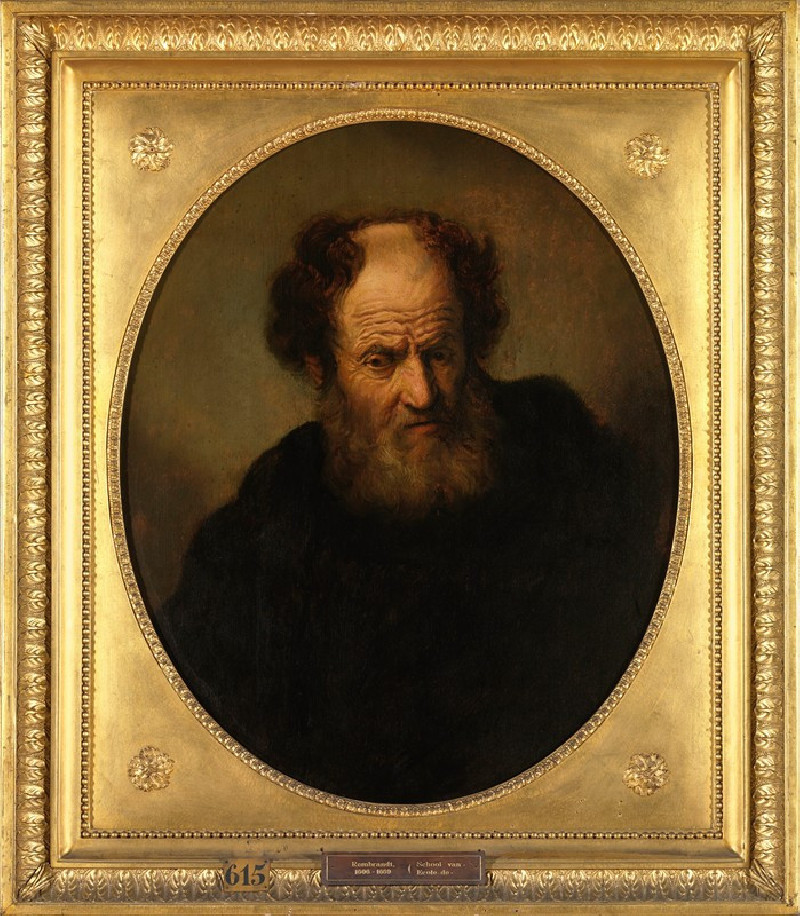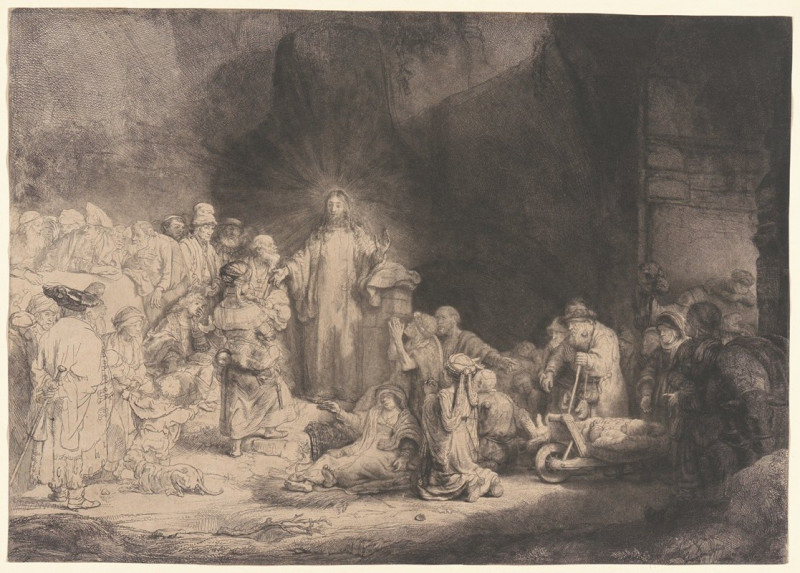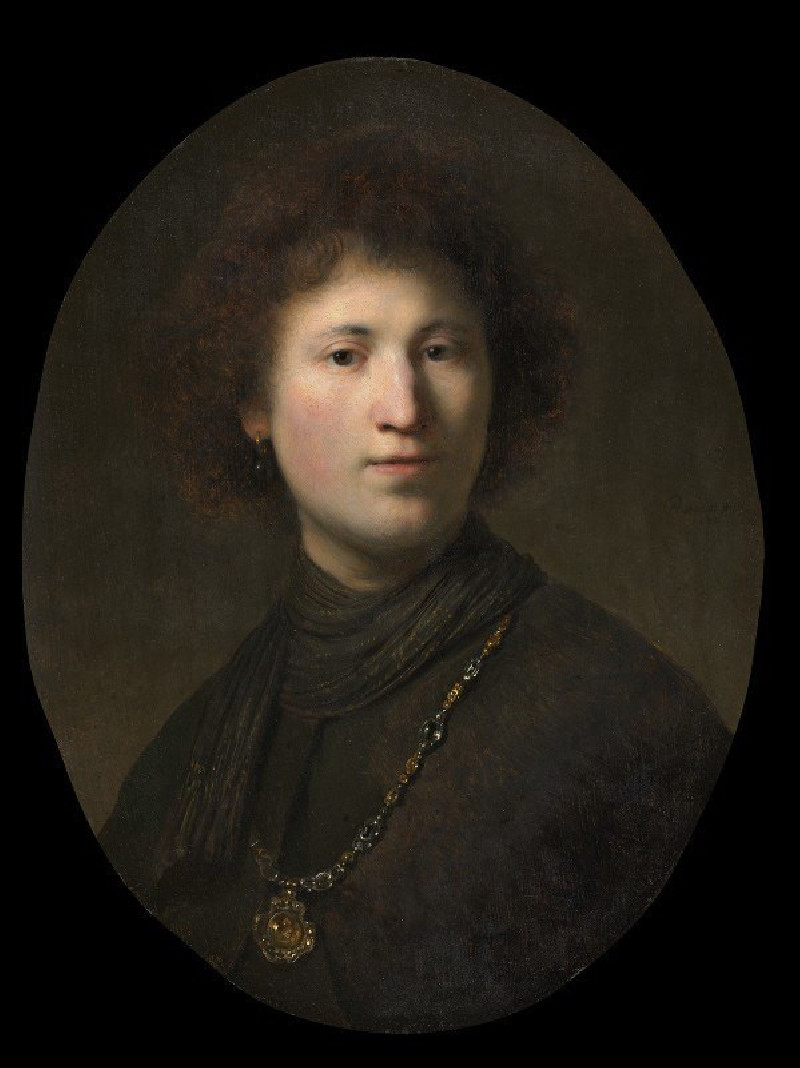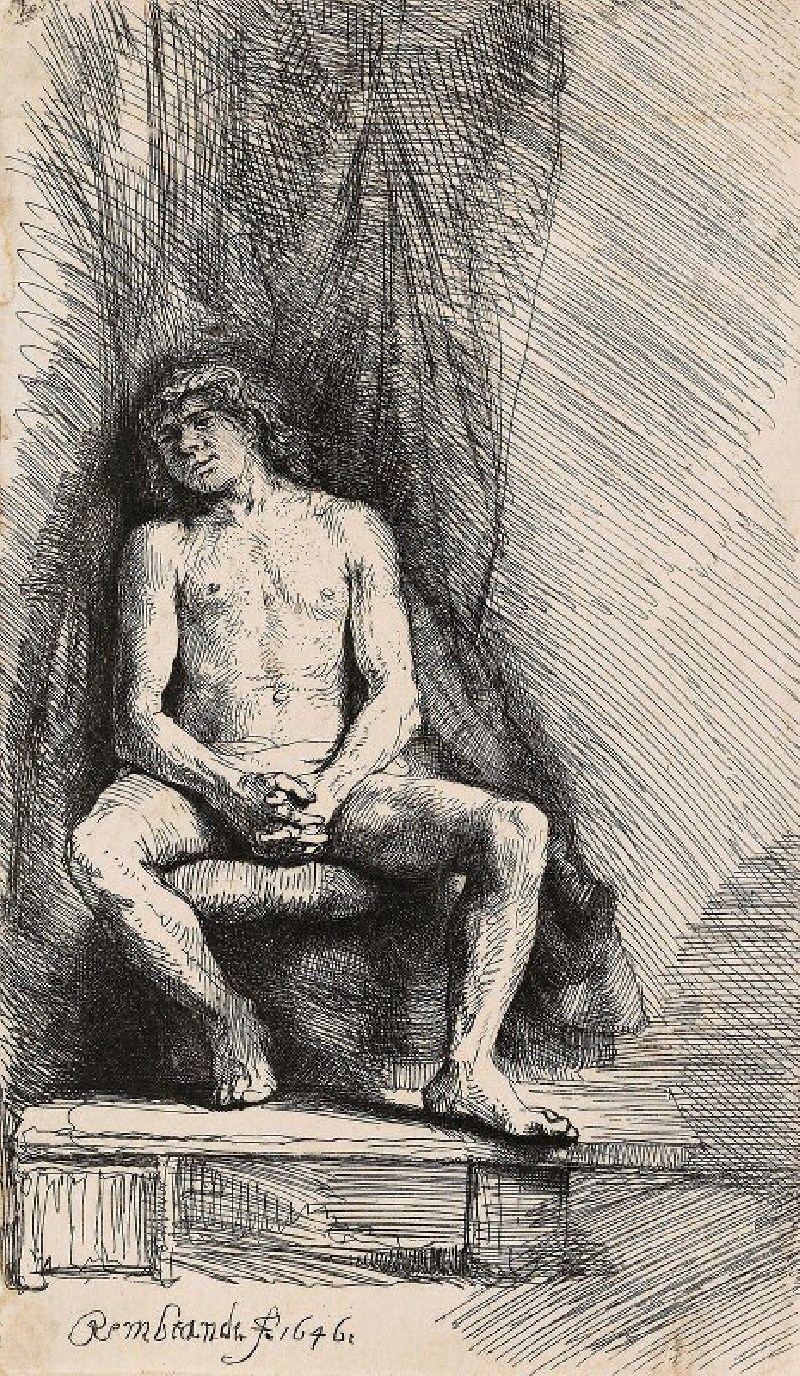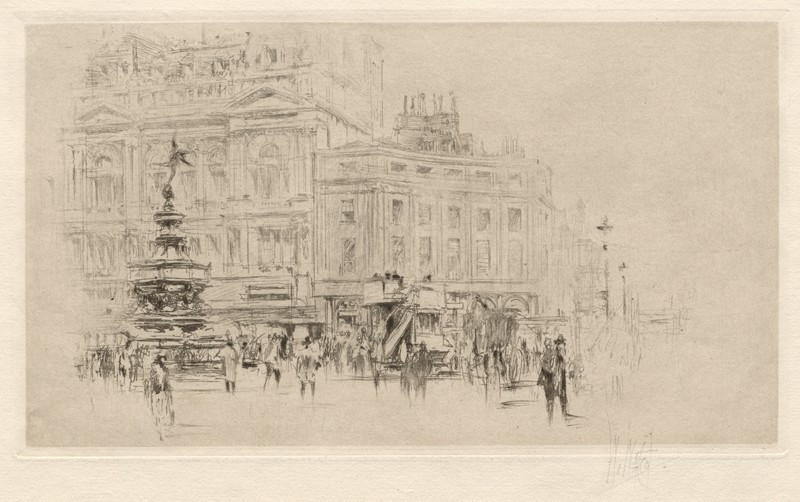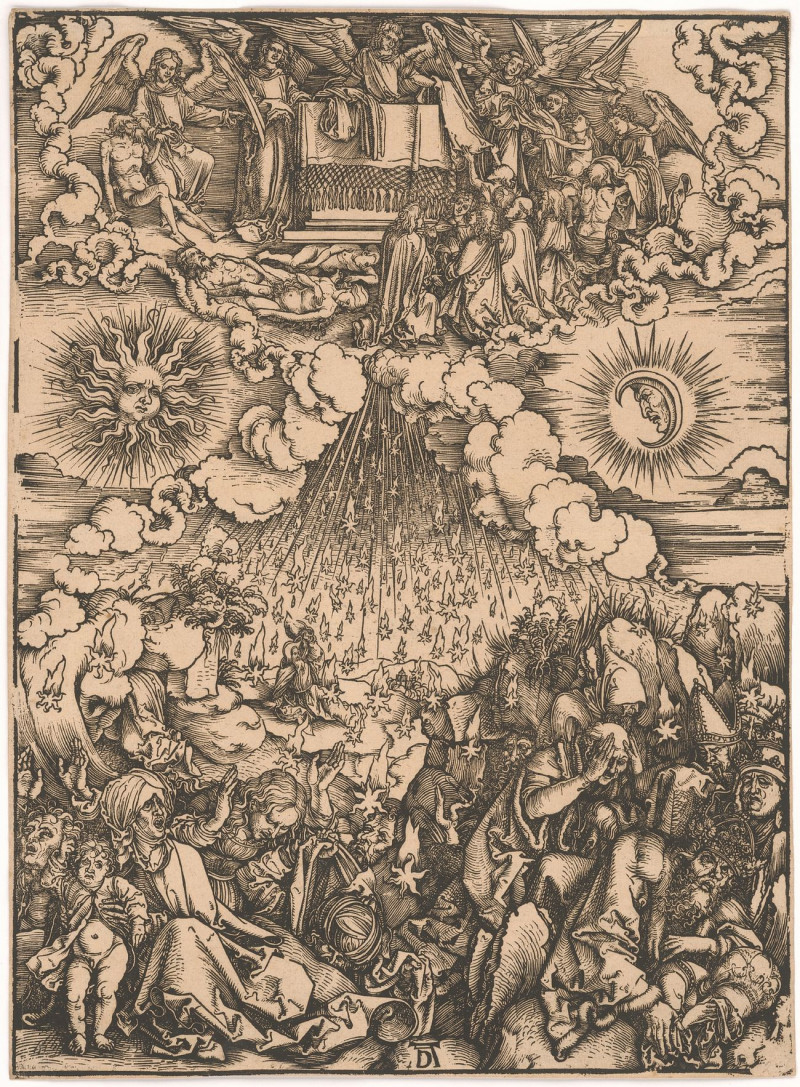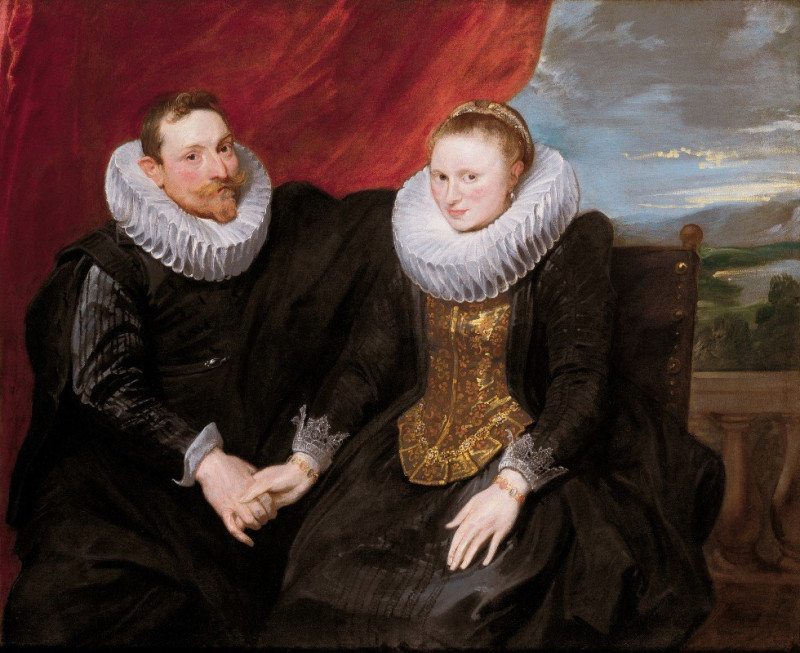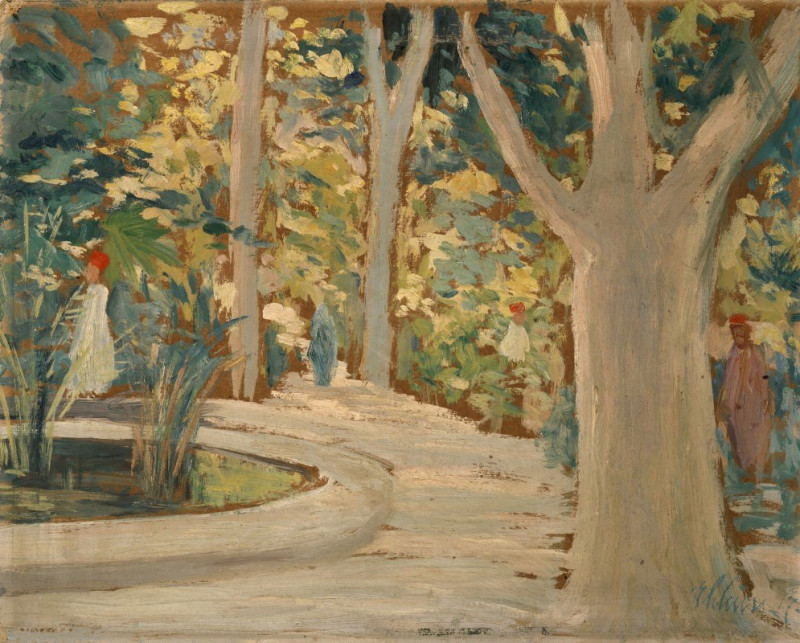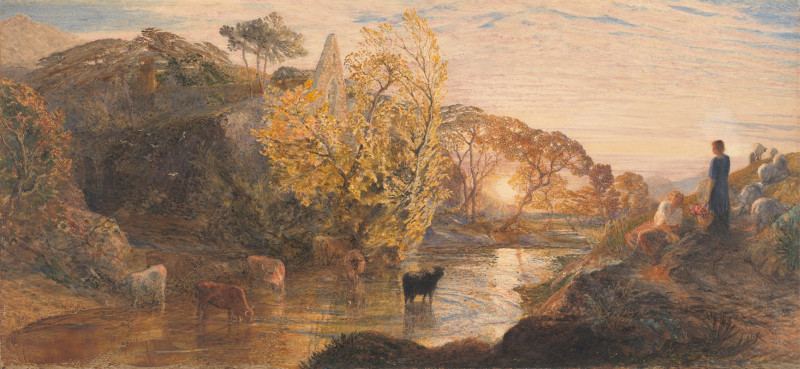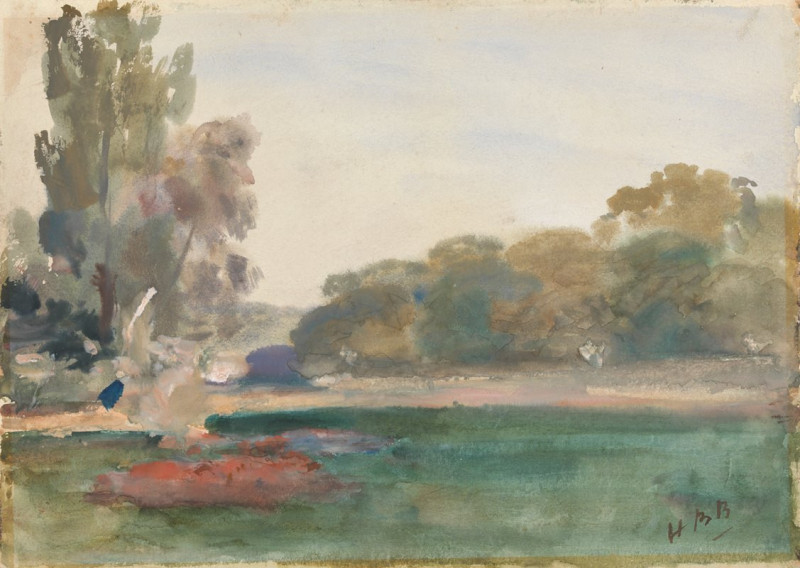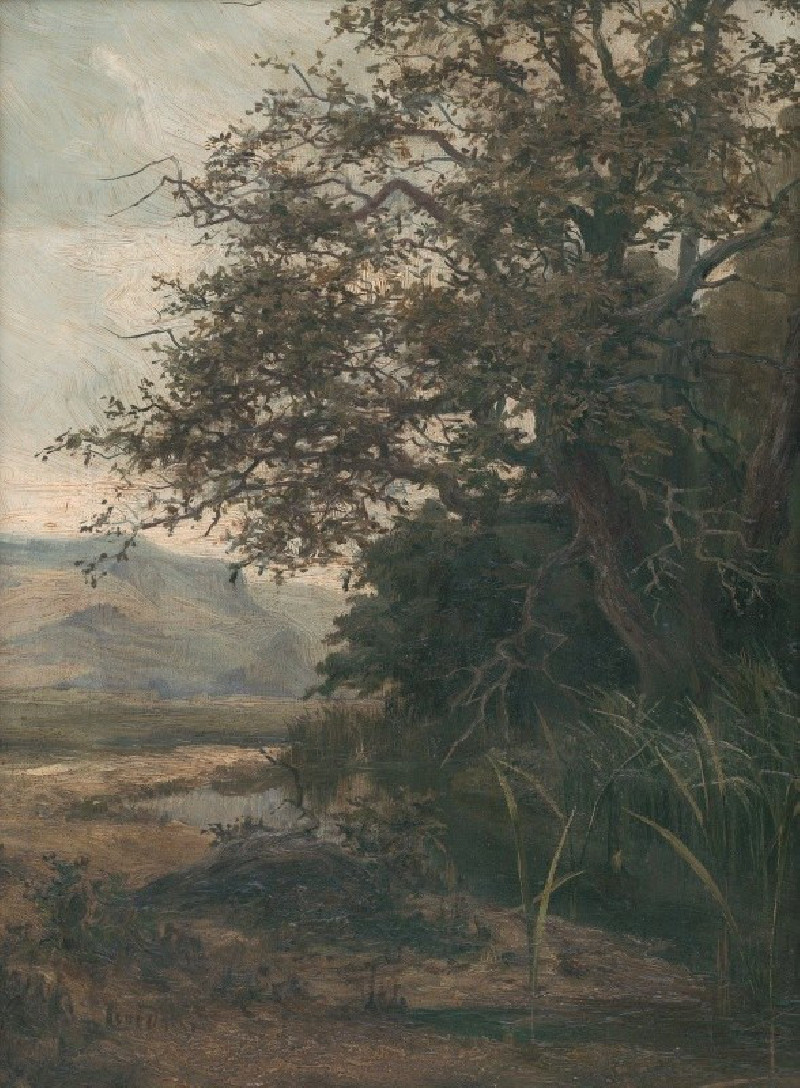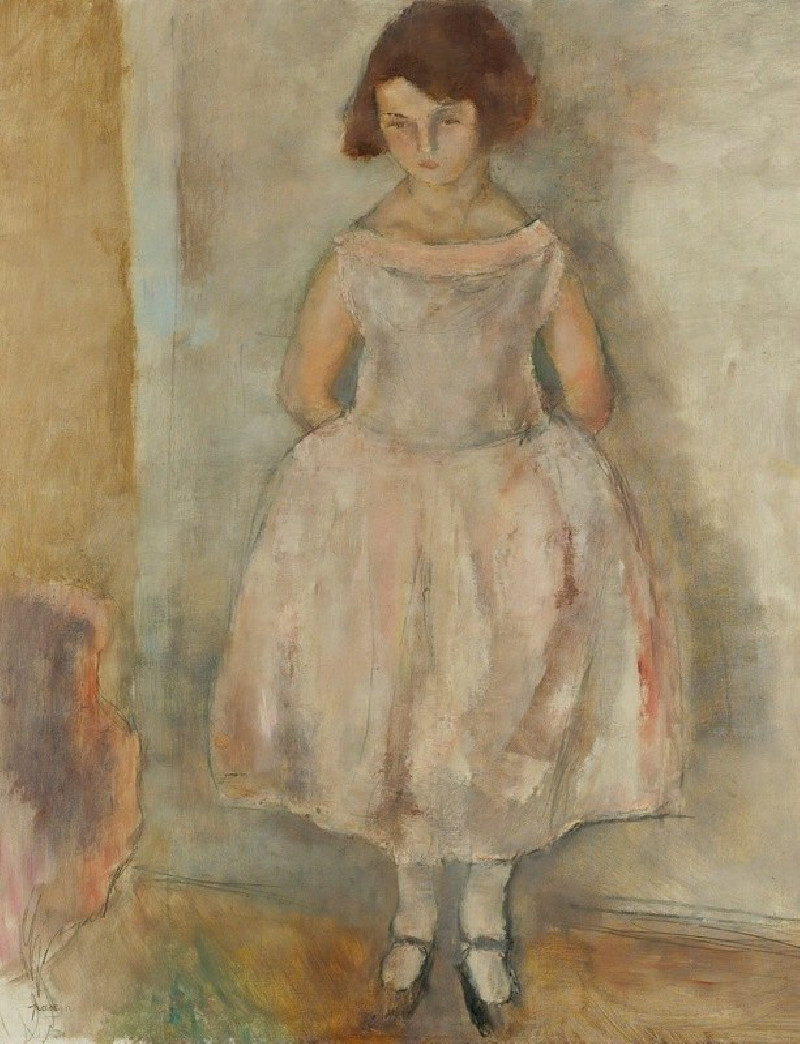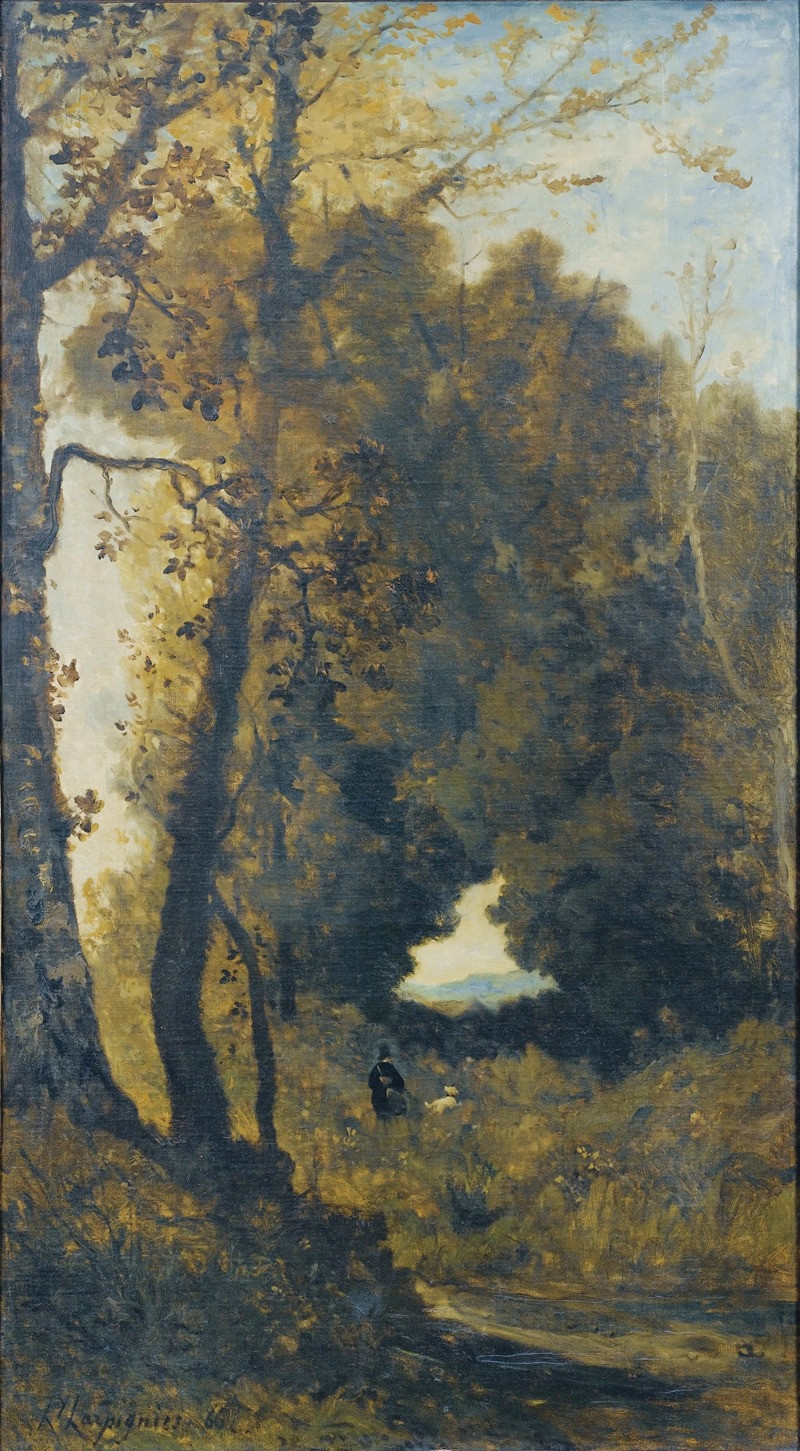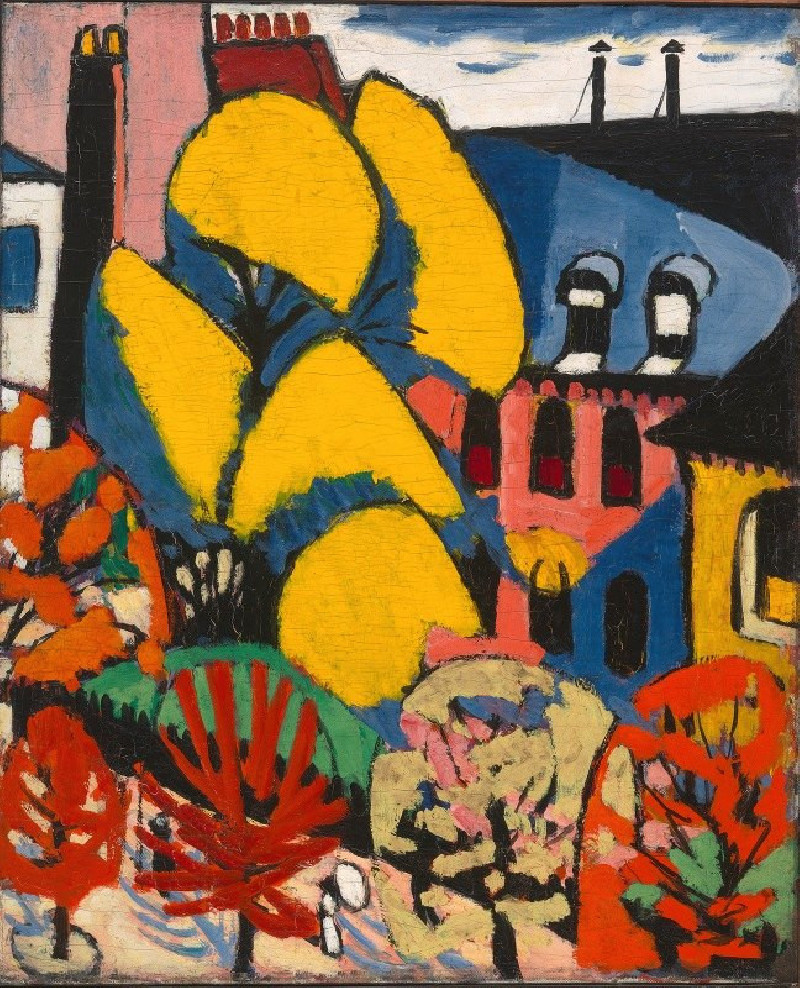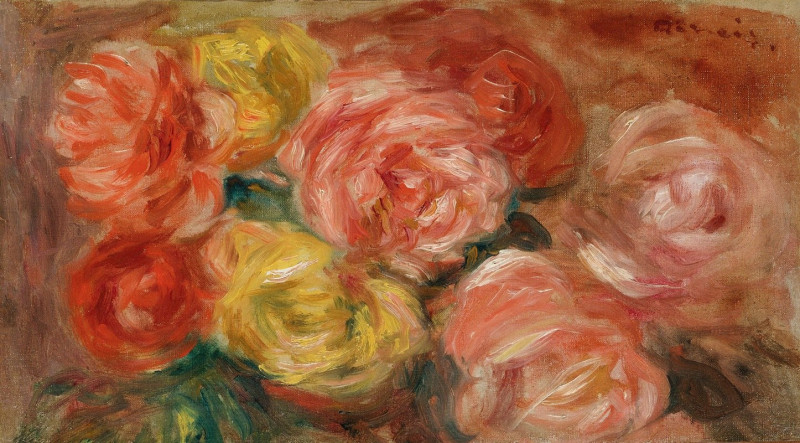Self-Portrait leaning on a stone sill (1639)
Technique: Giclée quality print
Recommended by our customers
More about this artwork
In the captivating etching titled "Self-Portrait leaning on a stone sill" (1639), Rembrandt van Rijn portrays much more than his physical appearance; he delves into the essence of his character and artistic soul. The portrait shows the artist leaning nonchalantly against a stone sill, clad in luxurious attire that includes a large, opulent hat and a flowing fur-trimmed robe, suggesting a blend of casualness and regality.Rembrandt's mastery is evident in the delicate rendering of his facial features, with soft lines bringing out the depth of his contemplative gaze directed slightly upward, perhaps lost in thought or critically assessing the world around him. The etching highlights his skill in using light and shadow, not only to mold his physical features expressively but also to illuminate his inner life and emotional state.This self-portrait is more than a mere depiction; it serves as a narrative of self-reflection and the artist’s engagement with his own identity as a painter.
Delivery
Returns
Rembrandt Harmenszoon van Rijn was a Dutch draughtsman, painter, and printmaker. An innovative and prolific master in three media, he is generally considered one of the greatest visual artists in the history of art and the most important in Dutch art history. Unlike most Dutch masters of the 17th century, Rembrandt's works depict a wide range of style and subject matter, from portraits and self-portraits to landscapes, genre scenes, allegorical and historical scenes, and biblical and mythological themes as well as animal studies.

